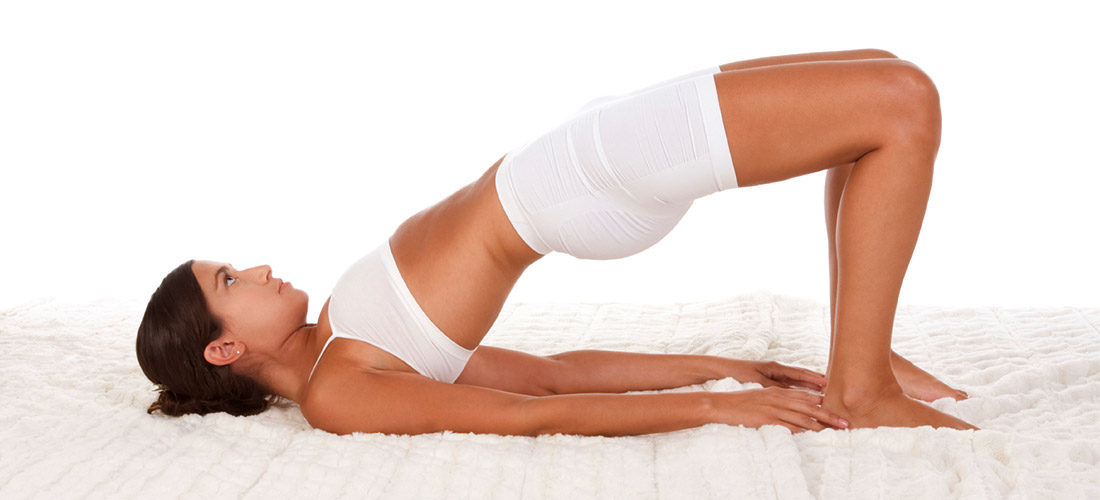Bridge pose (Setu Bandh Asana) is a backbend pose whose name comes from the word Setu, meaning ‘the bridge’. The pose resembles the bridge and hence the name. It is also called Setu Bandha Sarvangasana, as it exercises all major muscles and bones of the body. The pose has been found effective for women in strengthening the uterus, but must be avoided during pregnancy.
Contents
Health Benefits
While you bend in this pose, you stretch the chest, neck, spine and hips while strengthening them too. It improves blood circulation and digestion, calms the brain and central nervous system. Bridge pose has also been found helpful in reduction in frequency of headaches, fatigue, anxiety and insomnia.
Women going through menopause have found immense relief from the symptoms by performing this pose regularly.
Apart from these, a regular practice of this pose results in firm buttocks, thighs, strong shoulders, and calves.
Getting into pose
What you need: Room with fresh air (if you’re doing it inside, otherwise do it in open area), and you.
Difficulty Level: Beginner
Initial Position: Lie in supine position (on your back, arms on the sides, palms inwards)
Drishti or Gaze: While performing this pose, concentrate your gaze upwards/towards the sky
Steps:
- Bend your knees and place your feet flat on the floor. Keep your feet hip width apart, parallel to each other and as close to the buttocks as possible.
- Exhale as you press your upper arms and feet into the floor. Now, begin by lifting your hips towards the ceiling and try to distribute your weight equally. Inhale while moving upwards.
- Ensure that your chin is not digging into your chest (sternum). Hold the position for 15-30 seconds as a beginner. Later you must hold it even longer, say a minute or more.
- Gently exhale as you revert to the starting position. Do it twice in a practice along with other poses.
If you feel exerted, rest in Corpse pose.
Other variations
- If you wish, you could interlace the fingers and push the hands on the floor to lift the torso a little more up, or you could support your back with your palms.
- Eka Pada Setu Bandh Sarvangasana: Once you begin to find the Bridge pose easy, try lifting one leg up and placing it on the other knee. Hold it for 15-30 seconds, revert to initial supine position. Then, repeat the steps again, but lift the other leg this time.
Preparatory poses
- Cobra pose (Bhujangasana)
- Upward facing Dog pose (Urdhva Mukha Svanasana)
- Lunge pose (Anjaneyasana)
Beginner’s tip
Do not force up your chest while lifting as this may overstretch the neck. Roll a soft towel under your shoulders to support them better, and avoid injuries.
Advanced poses
- Locust pose (Shalabhasana)
- Bow pose (Dhanurasana)
Important Notes
- This is a Vinyasa yoga pose and hence, movements must be synchronized with the breath. That way, you strengthen your internal as well as external system simultaneously.
- Avoid this pose if you have a neck injury or a knee injury. Late term pregnant women should also avoid this posture.
Further reading
1. Pranayama – Beginner’s Guide
2. [Infographic] Why Organizations Should Invest In Yoga For Employees
Last Updated: April 14, 2014
Next Scheduled Update: June 14, 2014






Comments are off this post!